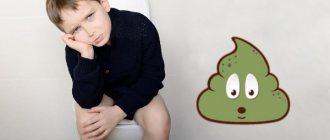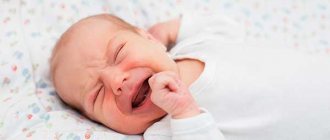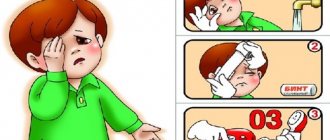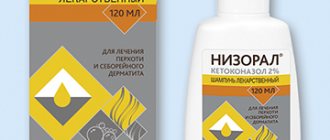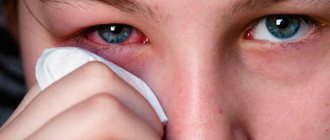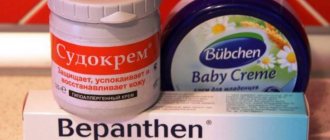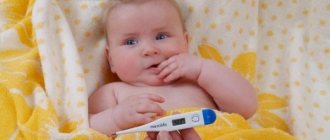Adults often do not pay attention to their own illnesses, but the health of children always causes increased concern. Sometimes a child’s itching is accompanied by a rash and redness, sometimes there are no visible signs of concern. And the reason for the prevalence of this symptom lies in the characteristics of children's skin. Why does my child's skin itch? This question is asked by many parents whose child experiences an irresistible urge to constantly rub the skin.
Changes can cover the entire body, or can be noted only in certain areas: palms, back of the hands, flexion surfaces. In most cases, only a specialist can figure out what causes itching and other changes on a child’s body. Treatment is prescribed only after a diagnosis has been established. Self-treatment with both local and systemic medications can only worsen the child’s condition.
Why is the baby itching?
To understand the nature of itching in a child, you need to observe his behavior. The reasons may lie on the surface.
Allergic contact dermatitis
Allergic contact dermatitis occurs in a limited area of skin after contact with an irritant. Allergies can be caused by metals, cosmetics, medications or plants. In this case, areas with red rashes appear that are very itchy.
On a note. First of all, limit contact with the allergen that provokes the rash. Local anti-inflammatory hormonal drugs may be prescribed.
Insect bites, helminth carriers
Various insect bites can cause skin itching in a child. Often, after going outside, the baby itches and redness appears on his body. They may swell. The reason may be an encounter with mosquitoes, bees or midges.
Parasites can provoke itching in a child, and additional rashes are observed:
- Scabies mite. Settles on thin, delicate areas of the skin. Parasites are most active at night.
- Helminths. The skin may become red on the legs, arms, and abdomen. The child itches most actively at night in the butt area.
- Bed bugs. Bite marks are represented by thin stripes of red dots that are located along the vessels.
- Pediculosis. Lice cause redness and severe itching in the hair area. If there are pets in the house, then the baby may suffer from flea bites.
On a note. Any insects can be carriers of dangerous bacteria or helminths.
Lice spread quickly from child to child and cause a lot of trouble
Allergic reaction
Itching in a child is one of the signs of an allergic reaction. Red patches that itch may indicate a food or contact allergy. It is important to analyze the last days before the rash appears. Changing washing powder or conditioner or adding new foods to your diet can cause irritation.
If you remove allergens from the diet, the baby’s condition should recover. Often the cause of food allergies are exotic fruits, seaweed, sweets and confectionery.
Sometimes rashes are caused by taking strong medications, for example, antibiotics, which are taken for scarlet fever, sore throat, flu, and pharyngitis.
Neurological causes
It is difficult to understand that a child is itching due to nervousness, since the symptoms are similar to other causes. Signs:
- the appearance of a small rash;
- immediately after stress, rashes appear and the child experiences itching all over the body;
- the baby is constantly irritated, cries, and may have trouble falling asleep;
- bouts of itching recur after any stressful situation.
Against the background of these symptoms, fever and general weakness are sometimes observed.
With any discomfort, the infant becomes capricious
Treatment should be prescribed exclusively by a doctor; self-medication is unacceptable. It is important to avoid situations where the baby will be nervous.
Systemic disorders
If a child constantly scratches his legs, stomach, back, arms, but there are no rashes, itchy skin can be caused by various systemic diseases of the internal organs. A baby may itch due to the development of diabetes mellitus, hyperthyroidism (thyroid dysfunction), liver disease, and intestinal disorders.
In this case, the fight against itching consists of treating the disease that caused the unpleasant symptom. The doctor will prescribe a series of tests and examinations that will help establish a diagnosis.
Sunburn
Redness and severe itching can cause a child to remain in the scorching sun for a long time. The skin turns red, hurts, then begins to peel and itch.
In this case, special medications will help. To prevent skin sunburn in the summer, you need to use sunscreen and try not to leave your baby outside for a long time in the heat.
On a note. Plants that the baby comes into contact with during play, such as nettles, can cause minor burns. Their appearance is also accompanied by itching and redness.
Fungal infections
A common cause of itching in a child is mycosis (fungal infection). Depending on the pathogen, the following diseases occur: scab, ringworm, dermatophytosis. Different fungi affect different parts of the body: limbs, feet, scalp, whole body. In addition to itching, the baby may experience peeling, hair loss, hyperemia or suppuration of the skin.
Skin diseases
Many dermatological diseases can be accompanied by rashes and itching (atopic dermatitis, bacterial lesions, eczema, seborrhea). To establish an accurate diagnosis, you will need to visit a dermatologist. The doctor will first perform a series of tests to determine the disease. In the future, appropriate treatment will be prescribed.
Chicken pox
The skin may itch due to infectious diseases, such as chickenpox. Itching is caused by rashes. First, red spots appear, which then turn into blisters and burst. Additionally, high fever, lethargy and headache are observed. If the child itches, use special ointments and gels that will help relieve the itching and dry out the rash.
Non-infectious causes
The most common causes of minor rash not related to infection:
- hormonal rashes,
- allergic reactions.
Hormonal rashes
It is found mainly on the body of infants. In the second or third week after the baby is born, his hormonal background begins to form. Small red pimples, possibly with pus-filled spots in the center, may be seen on the face, neck and upper chest. A rash in a baby with these symptoms does not require special treatment. It is quite enough to wash your face with boiled water with the addition of a weak solution of potassium permanganate or a decoction of calendula, celandine, and chamomile.
Allergic reactions
These reactions have a different picture:
- If the baby is breastfed, then the allergic reaction is associated with the products consumed by the mother. After mothers eat certain foods, a small rash may appear. In this case, it is better for them to refuse foods to which the baby reacts. When bottle feeding, you need to consult with your pediatrician about the advisability of changing the nutritional formula.
- In the form of eczema, when red, rough spots of the rash are located on the child’s cheeks, by the age of one year they appear on the bends of the knees and elbows. In severe cases, the rash on the child’s body itches, crusts, and flakes off.
- Hives appear on the skin as intermittent, raised, red blisters that are pale in the center. They affect the entire body and cause itching.
- Impetigo is a skin rash that appears as yellow-brown scabs or crusts. First, one pimple with a blister appears on the face, then the rash quickly covers the entire skin of the face and body.
Symptoms
What to do if a child cannot pee, girl or boy
It is easy for parents to see that a child is constantly itching, even if there are no rashes. If the baby develops additional symptoms, then increased attention should be paid to his health.
Itching is one of the symptoms of any disease
If pathology is present, there may be:
- rashes;
- redness and swelling;
- temperature;
- drowsiness.
Symptoms vary depending on the type of disease.
How does a child behave when itching?
After 2 years, kids can simply come up to their parents and tell them about their problem and ask for help. Sometimes small children make gestures or show dissatisfaction, whims, or whine.
Infants will not be able to say that they are itching, but they will show discomfort by their behavior:
- tears and whims;
- when feeding, the baby cannot sit or lie still;
- Redness, rashes and swollen areas appeared on the body.
On a note. It is very difficult to determine the presence of helminths in newborns, since they cannot reach their bottom to scratch it. In this case, pay attention to the condition of the baby’s anus - if there is redness near the anus, then it is advisable to have the feces analyzed.
Other reasons
Other causes of rash include:
- Miliaria, in which you can notice many small white and pink pimples in the neck and shoulders. They appear in hot weather. May develop blisters.
- Insect bites are visible by the sting mark in the center and have different sizes and shapes (from a barely noticeable spot to a tumor). They are located on open areas of the body and cause itching. Most often we see the consequences of mosquito bites, but we must not forget about lice.
- Poison ivy may be found in your area during the spring and summer. It also affects unprotected areas of the skin through direct contact. Itching is characteristic. Large blisters appear on the reddened skin.
Features of rash localization
- With heat rash from overheating, changes in the skin of children occur in the groin, neck, armpits, and bottom. You may be wrapping your baby up too much.
- Diaper rash produces rashes in the form of pimples of various sizes or red, rough spots in places that often come into contact with urine.
- Scarlet fever rash is observed in the armpits, groin and back.
In any case, parents should remember that if a rash is detected on the baby’s body, there is no need to try to independently determine the cause and treat the child. It is urgent to call your local pediatrician. Only a doctor will understand the diagnosis and prescribe the correct therapy.
Diagnostics
A child pees often - what to do if he urinates more than he drinks
At first glance, it is difficult to correctly assess the situation and quickly determine the cause of the itching. To do this, the child is examined, which is prescribed by a qualified specialist.
Diagnosis of a child includes the following series of activities:
- collecting a detailed medical history;
- examination of the skin;
- laboratory research;
- instrumental examination methods.
Only after receiving all the results of the prescribed procedures will the doctor be able to establish an accurate diagnosis and subsequently determine what treatment is required.
How does the treatment work?
The set of therapeutic measures must be followed by parents 100%. Therapy in the presence of a symptom such as itching may consist of the following recommendations and prescriptions:
- full compliance by the child with personal hygiene;
- exclusion of allergens;
- change in diet;
- local treatment (you will need to smear locally on areas of rashes and irritations);
- taking medications.
Is it possible to do Mantoux if a child is coughing?
Initially, the baby is shown to the pediatrician. He can already refer the child to a highly specialized specialist: an allergist, an infectious disease specialist, a psychologist, a neurologist, a dermatologist.
On a note. Various procedures can be used in treatment: magnetic therapy, massage, therapeutic sleep, UHF, acupuncture. An unpleasant symptom is relieved by prescribing antihistamines, sedatives or hormonal drugs.
Prevention of skin itching in children
According to Dr. Komarovsky, if attacks of itching in a child are repeated, but there are no serious reasons, then the rules for caring for the baby should be reconsidered. To prevent your child from scratching, you should do the following:
- change washing powder, use exclusively hypoallergenic;
- reduce the amount of salt in food;
- keep the room clean and with normal humidity levels;
- buy clothes for your baby exclusively from natural fabrics;
- Try to protect your child from stressful situations as much as possible.
Proper nutrition helps avoid allergens
Such simple measures should help cope with the problem. If this does not happen, consultation with a doctor is necessary.
How to care for baby skin
The baby's baby skin is delicate and thin. Parents need to protect her from scratches and scars to prevent the itching from recurring. To prevent itching, you should follow the basic rules of care:
- do not leave the baby in the bath for a long time; a daily shower is enough for the baby’s delicate dermis;
- arrange regular air baths;
- apply baby cream to dry skin every day;
- all baby cosmetics should have a neutral pH level;
- after bathing, you cannot wipe and rub the baby dry, just blot him with a towel;
- The temperature when swimming should not exceed 20 ° C.
Children must have air baths
If the child’s itching does not go away, all possible visible causes have been checked, then you should consult a doctor who will help diagnose the problem. In accordance with the diagnostic results, a set of measures will be prescribed to help cope with the situation.
What to process
It is recommended to wipe areas of the skin with inflamed pimples with ready-made alcohol solutions of brilliant green or calendula tincture. They can always be purchased at the pharmacy. If you have an infant, then it is best to lubricate the baby’s neck and skin folds with baby cream and dry it with powder.
After an examination, your pediatrician may recommend targeted treatments depending on the specific cause of the rash. It can be:
- antibacterial drugs,
- ointments and creams,
- antihistamines,
- remedies for dysbacteriosis,
- ready-made alcohol solutions.
Young mothers and fathers should carefully examine their baby’s skin in order to provide him with timely assistance. In each case, treatment may be different. It must be carried out under the supervision of a doctor to avoid very serious complications.
